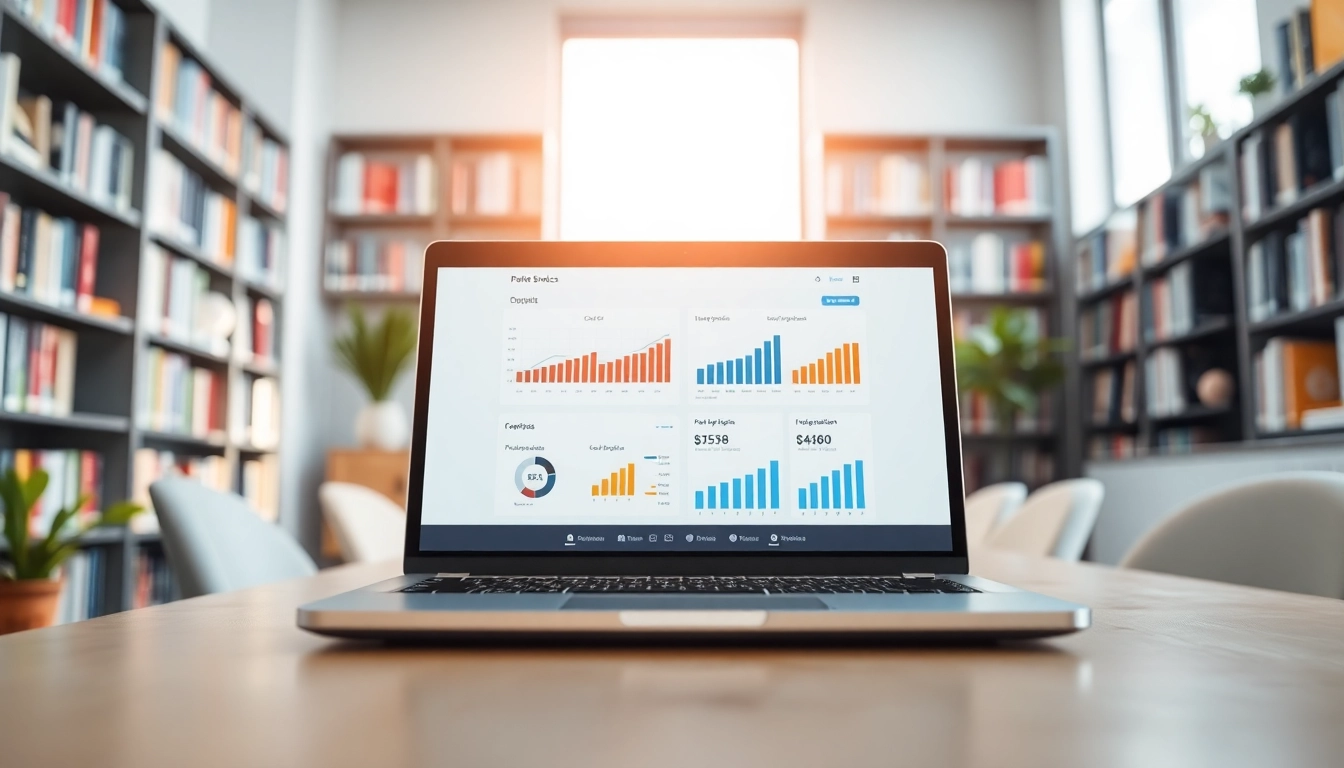Introduction to Plagiarism Detectors
Plagiarism is a term that resonates strongly in academic and professional settings. It refers to the act of using another person’s work, ideas, or expressions without proper attribution. As the digital age has made the sharing and accessibility of information easier than ever, the need for tools that can identify and combat plagiarism has surged. This is where a plagiarism detector comes into play, providing individuals and institutions with the means to uphold integrity and originality in their work.
What is a plagiarism detector?
A plagiarism detector is a software tool designed to analyze text and identify instances of copied or paraphrased content from existing sources. These detectors work by scanning large databases of published works, online content, and academic papers to find similarities. The principal aim of such tools is to ensure that written content maintains authenticity and to prevent intellectual property theft.
Importance of using a plagiarism detector
Using a plagiarism detector is vital for several reasons:
- Maintaining Academic Integrity: For students and educators, adherence to academic integrity is essential. Plagiarism detection tools help ensure that all submissions are original and properly attributed, thus fostering a culture of honesty.
- Enhancing Content Quality: Writers and content creators can utilize these tools to refine their work. By identifying unintentional plagiarism or overlap with existing literature, creators can modify their content to provide unique insights.
- Protection Against Legal Repercussions: Companies and individuals face potential legal challenges if they unknowingly use plagiarized material. A plagiarism detector can safeguard against copyright infringement claims.
- Boosting Reputation: Institutions that employ plagiarism detection demonstrate a commitment to originality, which can enhance their reputation in academic and professional realms.
Common misconceptions about plagiarism
Despite the understanding of plagiarism, numerous misconceptions persist:
- “Plagiarism is only copying text verbatim.” Many believe that plagiarism solely involves word-for-word copying. However, paraphrasing without proper attribution or using someone else’s ideas without credit also constitutes plagiarism.
- “I can’t plagiarize if I use quotes.” While quoting is a legitimate way to reference sources, it must be done correctly, with proper citation formats. Misuse of quotes can still lead to accusations of plagiarism.
- “It’s only plagiarism if it’s published work.” Plagiarism applies whether the material is published or unpublished. Students can be penalized for copying from classmates or uncredited online sources.
How Plagiarism Detectors Work
The mechanics behind plagiarism detection involve sophisticated technology and algorithms tailored to identify content similarities. Understanding these intricacies is essential for users to leverage these tools effectively.
Algorithms and technology behind plagiarism detection
Plagiarism detectors utilize algorithms that compare the submitted text against vast databases, including academic journals, websites, and previously submitted papers. Key components involved in this process include:
- Text Analysis Algorithms: These algorithms analyze sentence structure, grammar, and vocabulary to detect similarities between texts.
- Database Comparisons: The tool checks the submitted content against extensive databases, looking for matches in other works.
- Machine Learning: Advanced detectors use machine learning to improve their recognition capabilities over time, adapting to new writing styles and formats.
Types of content similarities identified
Plagiarism detectors can identify various forms of content overlap, including:
- Verbatim Copying: Direct copying from sources without quotation marks or citation.
- Paraphrasing: Rewording texts without proper attribution or citation, which can lead to unintentional plagiarism.
- Structural Similarities: Maintaining the same order and flow of arguments or information despite using different wording.
- Uncredited Ideas: Utilizing concepts or theories from other authors without acknowledgment.
Limitations of plagiarism detection software
While plagiarism detectors are powerful tools, they have inherent limitations:
- False Positives: Detectors may flag common phrases or widely-used expressions as plagiarism, leading to potential inaccuracies.
- Limited Databases: The effectiveness of a detector is contingent upon the databases it accesses. If a work is not included in its database, it may not be flagged.
- Quality of Writing: These tools cannot evaluate the overall quality or context of the writing, which can lead to misinterpretation of originality.
- Different Citation Styles: Variances in citation formats can lead to confusion, as the same source may be cited correctly in one style and not in another.
Choosing the Right Plagiarism Detector
Selecting a plagiarism detector is a critical decision that can influence the effectiveness of maintaining content integrity. Here are some factors to consider.
Key features to look for
When evaluating plagiarism detectors, consider the following features:
- Database Size: A larger database offers greater accuracy in identifying sources, enhancing the detector’s effectiveness.
- Real-Time Checking: Tools that provide instant reporting can help streamline the writing process.
- Integration Options: Compatibility with word processors and learning management systems (LMS) can make the tool more user-friendly.
- Detailed Reports: Comprehensive reports that indicate matched sources and highlight problematic sections can aid in the revision process.
- Cost-Effectiveness: While some tools are free, evaluate their effectiveness. Premium options often offer enhanced features worth the investment.
Top plagiarism detectors in 2023
Here are some of the leading plagiarism detectors worth considering:
- Turnitin: Widely used in academic institutions, Turnitin not only detects plagiarism but also provides tools for feedback and improvement.
- Grammarly: Known for its grammar-checking capabilities, Grammarly also includes a plagiarism detection feature that scans billions of web pages.
- PapersOwl: A free plagiarism checker known for its accuracy across various file formats, making it suitable for diverse needs.
- Duplichecker: A robust tool for students and professionals alike, this tool offers free and premium checking options.
- Copyleaks: Ideal for identifying plagiarism across various content types, including website code and AI-generated text.
Cost considerations for plagiarism detectors
The cost of plagiarism detection tools can vary significantly. Here are some general insights:
- Free Options: While many free tools exist, they often come with restrictions, such as database limitations or fewer features.
- Subscription Models: Many tools adopt a subscription model, charging monthly or annually based on usage levels and features. These options are often more comprehensive but may require a larger budget.
- Pay-per-Use: Some services charge based on the number of checks or the length of documents, which can be beneficial for occasional users.
Best Practices for Using a Plagiarism Detector
To maximize the benefits of any plagiarism detector, users should adopt best practices that enhance the effectiveness of these tools.
Integrating it into your writing process
Incorporating a plagiarism detector into your writing workflow can be pivotal. Here’s how:
- Initial State Check: Before adding citations, run a preliminary check to guard against unintentional similarities with existing works.
- Iterative Checks: Use the detector at various stages of writing to ensure continuous originality, especially after revisions.
- Use as a Learning Tool: Evaluate discrepancies and similarities. Understanding why certain areas were flagged can enhance writing skills over time.
How to interpret the results
Interpreting results from plagiarism detectors requires careful analysis:
- Identify Matched Sources: Understand the context of each match and assess if the overlap is significant enough to warrant revision or citation.
- Evaluate Percentage Scores: While a high percentage may signal a problem, evaluate the nature of the similarities—whether it involves general phrases or critical ideas.
- Analyze Detected Issues: Focus on sections marked as problematic and review them for potential fixes or necessary citations.
Steps to take if plagiarism is found
If plagiarism is detected, addressing it promptly is essential:
- Understand the Context: Assess the flagged sections. Determine if they result from misquoted sources or if more significant revisions are needed.
- Revise the Content: Modify the text to enhance originality, ensuring proper citations or rewording where necessary.
- Consult Resources: If unsure about how to address the issue, consider consulting style guides or plagiarism policies from relevant institutions.
Case Studies: Success Stories of Plagiarism Detectors
Plagiarism detectors have validated their worth across various sectors, as illustrated in the following case studies.
Academic institutions benefiting from plagiarism detection
Many universities have integrated plagiarism detection systems into their curricula to teach students about originality and proper referencing. Institutions reporting lower instances of plagiarism note that these tools have actively promoted a culture of honesty and respect for intellectual property.
Businesses implementing anti-plagiarism measures
Companies in content-driven sectors, such as marketing and publishing, have started using plagiarism detectors to ensure the originality of their materials. This practice not only preserves their brand integrity but also shields them from potential legal issues associated with copyright infringement.
Individual authors and content creators overcoming plagiarism challenges
Freelance writers and bloggers have found great value in plagiarism detectors for protecting their work. With increased confidence, they can submit their articles knowing they aren’t infringing on others’ ideas, allowing for a more authentic writing process.



